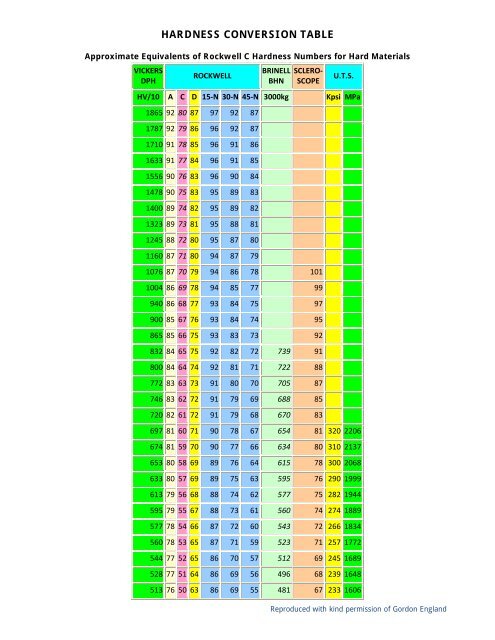

The Rockwell hardness test is performed with a Rockwell Hardness Tester (RHT). Rockwell and Brinell tests are different in how they measure hardness. The resulting hardness value is a number on the Vickers scale in either HV or HRA units. The Vickers hardness test measures the resistance of a material to permanent indentation by an indenter under controlled conditions. The resulting hardness value is a number on the Rockwell scale in BHN or HRC units. The Rockwell hardness test measures the resistance of a material to permanent deformation by an indenter under controlled conditions. This test is used primarily for non-ferrous metals, with some exceptions, such as cast iron and most steels. The result is reported as a number on a scale calibrated in area units (square millimeters). It determines the hardness of metals and alloys by measuring the depth (in millimeters) to which a hardened steel ball sinks into the test specimen under a standard weight. The Brinell hardness test measures the ability of a material to resist indentation. Metal Hardness Tests Brinell, Rockwell, and Vickers Hardness Conversion Chart/Table However, it can only be used on flat samples and not cylindrical ones like those found in pipe or rods. The Rockwell test is more accurate than the Brinell test because it measures just one depth rather than two different sizes. Still, instead of measuring the depth of this indentation, it simply measures its size.īoth methods have their advantages. The Brinell hardness test also uses a diamond point to make an indentation in the tested metal. The hardness number is then determined by measuring how deep this indentation is. The Rockwell test measures the depth of indentation left on a piece of steel when pressed into it with a special diamond point. While the Rockwell hardness test and Brinell hardness test are used to measure the hardness of metals, they are different methods. Standard Hardness Conversion Calculator for Metals (ASTM) Metal Hardness Tests – Difference Between Rockwell and Brinell Hardness Test When choosing a material or cutting tool to produce CNC machining parts, hardness should be considered. This allows the testing of materials with varying properties like elasticity and plasticity, which cannot be determined using Vickers or Rockwell scales

Rockwell C scale – this test determines the hardness of a material by measuring the depth of penetration of a diamond-tipped stylus into its surface.īrinell hardness test (HB) – this method uses more than one load and applies it at different speeds. The hardness number assigned to different materials depends on the load used and the time taken to achieve that load. Vickers hardness test (HV) – this method uses a special diamond pyramid with a specified load applied for a specific time. What is the Hardness of a Material? There are three types of hardness:

In other words, it is the ability to maintain its shape when an object is subjected to force. Hardness is defined as the resistance to permanent deformation or scratch. 4 Rockwell and Brinell tests are different in how they measure hardness.


 0 kommentar(er)
0 kommentar(er)
